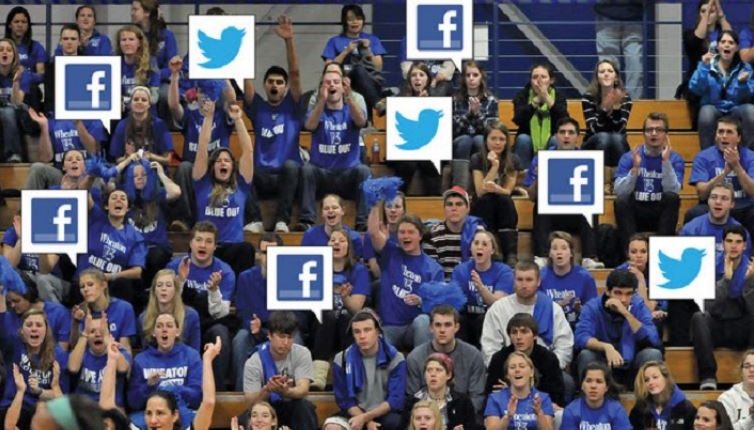Globally, the landscape is shifting for sports viewing and social media, along with a growing trend within society towards mobile devices, is fuelling the drive for change.
If not threatening the entire status quo.
Social media has exploded exponentially over the last decade with the evolution in mobile technology, so much so that it’s now positioned strategically and significantly to compete directly with broadcast media outlets. As if broadcasters didn’t have their hands full already competing against each other. Now, they’re up against anyone equipped with a handheld device… the world over, too, mind.
The dramatic upheaval facing broadcasters isn’t just down to the fact that everyone with a camera now can record news, events, sports, etc. and post it in real-time; thereby beating broadcasters to the punch. How content is being consumed is what’s at the crux of it, driving the shifting landscape and broadcasters to either get in on the action or risk being left behind.
Everything is quite literally at the tip of a finger – shows, movies, news, sports, betting on sports, and more – all are available on a mobile device and readily consumed from the comfort of home or on the go.
On the face of it, social media and broadcasters have a lot in common: an interest in news and sports. Be it regional, national or international news and sports, both social media and broadcasters are in the mix and heavily reliant on ratings/views and user interaction. This common ground puts them in direct competition for viewers’ time.
There is one fundamental difference in the approach though. That is, social media’s focus is targeted, more bespoke with its intimate one-on-one connection. Traditional broadcasters have long pursued the one-to-many connection – but that is changing now. Here, social media and broadcasters have an opportunity to partner on the premise of a common goal and the greater good.
It’s the proverbial case of “If you can’t beat them, join them.”
The sepia-toned days of family gatherings around a TV set to watch a favourite show, get the latest news or watch a game of sports together are passé. Well, not entirely passé… but, well, let’s face it, less frequent with more cross-channel engagement.
And so, they are… with some big names leading the charge into the digital realm, including Amazon and Sky.
First to make inroads into the digital realm was Amazon Prime when the streaming service secured a deal to show live Premiere League football to its subscribers.
MATCH DAY NUTRITION
Ever wondered what Premier League footballers eat on match days? At the launch of the new Amazon Prime Video documentary, ‘All or Nothing: Tottenham Hotspur’, Spurs’ performance nutritionist Graig Umenyi shared his expert advice:https://t.co/7BL1KuIDwN pic.twitter.com/X0xYbVAKmo— Fit Hire (@FitHire) September 1, 2020
Sky Sports partnered with YouTube to share its coveted broadcasting rights at the start of the 2019-20 Premier League season. The TV provider agreed to a deal to show three-minute game highlights on YouTube shortly at the conclusion of matches.
By no means is Sky Sports the first TV provider to partner with YouTube, but by commanding rights to some of the biggest competitions elevates YouTubes profile as the go-to destination for sports highlights.
However, social media could potentially become an even greater threat to TV broadcasters if they were to invest more time and capital into content production and premium content delivery.
Social giant Facebook’s first foray into streaming sports came behind a deal with MLB to stream 26 live games online. The success of the enterprise led Facebook to pen an agreement with La Liga in India to stream games for free for three seasons. Moreover, there are reports that Facebook is looking to broaden its reach with its own video content.
In the meanwhile, Twitter is expected to start streaming official NFL videos and other sports content year-round to followers, including a new 30-minute live digital show that will air on Twitter five nights per week over the course of the NFL season.
Clearly, broadcast TV alone simply no longer meets the demands of the modern consumer. Nowadays, sports fans are across all devices for the consumption of sport, turning to social media and online platforms with increasing frequency for sports content. And the sports industry must in the interest of staying abreast of the changing times diversify its partnerships.




